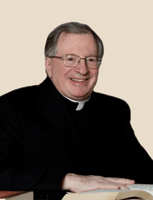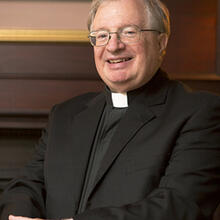Jesuits are known for their cross-cultural explorations. In this issue John Worthley celebrates one of the most famous of the early Jesuit missionaries, Matteo Ricci. Li Madou, as the Chinese call him, was so successful in introducing Western Christian culture to China and Chinese civilization to the West that, Worthley believes, his legacy can still serve as a bridge in the tense relations between Rome and Beijing.
After Ricci, my favorite Jesuit pioneer missionaries are Antonio Andrade and his successors, who were among the first Westerners to cross the Himalayas to explore Tibet. Michael Wood followed Andrade’s extraordinary journey in the PBS series “In Search of Myths and Legends.” In Tibet: The Jesuit Century (Hargrove), the late Philip Caraman, S.J., described the Society’s several attempts in the 17th and 18th centuries to establish a mission in Tibet. Most remarkable was Ippolito Desideri, the last of the Jesuit explorer-missionaries to establish himself there. He settled into a Buddhist monastery, learned Tibetan and studied the sacred Buddhist texts. When Capuchin friars arrived to demand he turn over the mission to them, he was carrying on what today we would call interreligious dialogue with his hosts. From the Spiritual Exercises, wrote the Jesuit superior general, Adolfo Nicolás, recently, these missionaries learned “one should always presume that those with whom one speaks are worthy of trust and fairness.” As a result, they “exemplified a true dedication to the overall truth shared by all.”
Jesuits today continue to engage in interreligious dialogue. Given the global religious-political situation, it should be no surprise that Jesuits are especially active in Catholic-Muslim dialogue. One of the more celebrated is Paolo Dall’Oglio, who revived the Mar Musa monastery in the Syrian desert as a site for Muslim-Christian encounter (see John Haughey, S.J., “Friends of Mar Musa,” Am., 11/27/06). Another is Samir Khalil Samir, sometimes called the father of Arabic patristics for his pioneering work on early Arabic Christian writing. Georgetown University, with its Center for Muslim-Christian Under-standing and the Jesuit Islamicists Daniel Madigan and Tom Michel, is becoming well known for advancing the dialogue. At Fordham University, Patrick J. Ryan, S.J., hosts public interreligious dialogues each semester with Muslim and Jewish colleagues.
Internationally, one of the better-known Jesuit Islamicists is Christian Troll. A consultant to the Pontifical Council for Interreligious Dialogue, he has worked in Sudan, Iran, Pakistan and India and taught in Britain, India, Italy, Turkey and his native Germany. In recent years, he has turned to popular education. New City Press has just issued a convenient handbook to aid both Catholics and Protestants in their dialogues with Muslim neighbors, titled Muslims Ask, Christians Answer.
It is not unusual for the questions of devout believers in one faith to arouse renewed interest on the part of others in their own faith. Two decades ago at the Jesuit catechetical center in Amman, Jordan, I met young Arab Christians who freely admitted they were studying theology because of encounters with their articulate Muslim contemporaries.
By elucidating what Muslims think about key doctrines (the word of God, the Incarnation, God, the church) and practices (prayer, celibacy, religious freedom), Muslims Ask, Christians Answer provides a beginner’s knowledge of contemporary Islam for Christian readers. Father Troll’s inclusion of a chapter on religion and the world and another on the religious pluralism and freedom of religion open up the ground for discussion of the testy political issues that often vex believers on both sides. Following this study guide may help readers find the “ray of truth” in the Muslim “other.”








